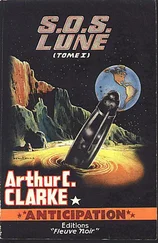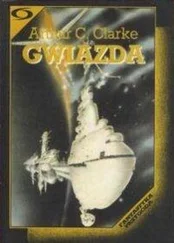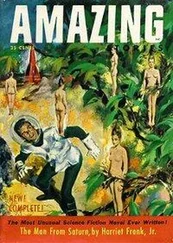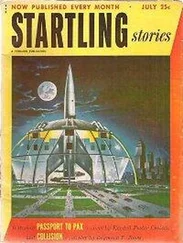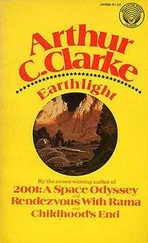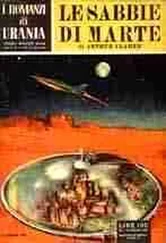The ground became mountainous. The army squeezed through valleys, each higher and more narrow than the one before. The Mongols called to each other, and their voices echoed from the walls. Sometimes Kolya would see eagles high above, their unmistakable silhouettes painted against the lead-gray sky. Genghis’s generals muttered darkly about their vulnerability to ambush here.
At last the land opened up into a vast canyon bounded by walls of shattered rock that reared up toward the sky. Kolya found himself on the ridge at the head of the canyon. An enormous flat-topped mountain loomed over him, streaked by snow and ice like the droppings of immense birds. He looked back, and saw the army of Genghis Khan strung out along the canyon’s length, people and animals the color of mud, with here and there the sparkle of polished armor. But this thin line of people was dwarfed by the towering pinnacles of purple-red rock around them.
They moved on, tracking the northwestern border of modern China, heading southwest toward Kyrgyzstan. After that it was only a few more days’ ride until they came to the town.
The Mongols, great believers in intelligence, sent scouts and spies creeping around the town, and eventually envoys who walked boldly up its main streets. Citizens in flat caps and buttoned-up jackets marched out, hands extended in friendship to these rank-smelling strangers.
The place was obviously modern, or nearly so. The news of it seemed to jolt Kolya out of the trance into which the journey had plunged him. It was a shock when he heard that the army, and he, had been traveling for nearly three months.
And it was here, as it turned out, that the final stage of his own journey would begin.
***
Sable was taken forward to help check out the town. It was Bishkek, she thought, in the twenty-first century the capital of Kyrgyzstan. The place as they had found it was obviously from some preelectric age, but there were water mills and factories. “It could be late nineteenth century,” she said. Metaled roads led into the town, but they were truncated by time slips a kilometer or so outside town.
More scouts were sent in, and Kolya was taken to translate. The town was a pretty place, its streets lined with trees, wilting a little under the persistent acid rain. Reflecting a deeper history, its main thoroughfare was called Silk Road Street. The townsfolk, cut off and with no idea what had happened, were disturbed by the lack of visits by their tax inspectors, and wanted to know if there were any directives from Moscow, any news of the Tsar. Kolya longed to speak directly to them, but the Mongols wouldn’t allow it.
Kolya was excited by the town, the most modern place they had yet encountered. Surely there was a base of equipment and expertise here that could be built on. He pressed Yeh-lü to make friendly contact. But his pleas went unheard, and he began to grow disturbed: the Mongols did not like towns, and knew only one way to deal with them. Sable wouldn’t back him up; she merely watched and waited, playing her own complicated game.
Kolya witnessed some of what followed.
The Mongols came in the night, riding in silence. When they charged they roared, and the sound of their voices and the horses’ hooves overwhelmed the little town. The killing began in the main street, and swept through the town, a wave of butchery with a bloody froth of slaughter at its leading edge. The townsfolk could put up no resistance save for a few futile potshots with antiquated firearms.
Genghis had ordered that the town’s ruler be brought out alive. The mayor tried to hide himself and his family in the town’s small library, and the building was taken apart brick by brick. His wife was killed before him, his daughters raped, and the man himself trampled to death.
The Mongols found little of value in the town. They broke up the newspaper office’s small printing press, bringing out the iron to melt down and reuse. It was the Mongols’ habit when taking a town to pick out artisans and other skilled folk who might serve their purposes later, but in Bishkek they were capable of recognizing little of what they found: the skills of a clockmaker or accountant or lawyer meant nothing to them. Few men were allowed to live. Most of the children and some of the younger women were taken prisoner, though many of the women were raped. All this was done mechanically, joylessly, even the rapes; it was just what the Mongols did.
When they were done, the Mongols torched the town systematically.
The surviving prisoners were driven out into the countryside towards Genghis’s encampment, where they huddled in desolate misery. To Kolya they looked like classic peasant stock, and their waistcoats and trousers, thick skirts and headscarves were the subject of stares from the Mongols. One beauty, called Natasha, the fifteen-year-old daughter of an innkeeper, was picked out for Genghis himself. He always took the most beautiful women, and impregnated many of them. Genghis had intended to drive the prisoners on with him, for there were always uses for such wretched souls—they could be driven into battle, for instance. But when he found that one of the Golden Family had been injured by the bullet of a wild-eyed solicitor, he ordered the prisoners to be slain. Yeh-lü’s weary pleas for leniency counted for nothing. The women and children submitted meekly.
By the time the army moved on the town was reduced to a smoking ruin, little left of the buildings above foundation level. The Mongols left a heap of severed heads, some of them heartbreakingly tiny. A few days later, Genghis ordered his rearguard to return to the town. A handful of citizens had escaped the slaughter, hiding in cellars and other hideaways. The Mongols rounded these up and put them to death, after enjoying a little more sport.
Sable showed no reaction to this, no emotion at all. But as for Kolya, after Bishkek, his mind seemed clear about what he must do.
It took two months of sailing to reach the head of the Gulf. From there, Alexander was anxious to move inland quickly. He formed up an advance party of a thousand troops, accompanied by Eumenes, Hephaistion and others. Bisesa and her companions made sure they were attached to the expedition.
Within a day of disembarking the party set off for the short march inland to Susa, in Alexander’s time the administrative center of his conquered Persian empire. Alexander was still too weak to ride or walk far, so he rode on a cart covered with purple awnings, a hundred Shield Bearers marching in step around him. They reached Susa without incident—but it was not the Susa Alexander remembered.
Alexander’s surveyors had no doubt about the site, at the heart of a sparsely greened plain. But there was no sign of the city, none at all. They might have been the first humans ever to set foot here—as perhaps they were, Bisesa thought.
Eumenes joined the moderns, his face grim. “I was here only a few years ago. This was a rich place. Every province of the empire contributed to its magnificence, from craftsmen and silversmiths from the Greek cities of the coast, to wooden pillars from India. The treasure here was remarkable. And now …” He seemed overcome, and Bisesa glimpsed again the rage she had sensed building in him, as if this intelligent Greek took the Discontinuity personally.
Alexander himself got out of his cart and walked around, peering at the earth, and kicking at clods of dirt. Then he retreated to his awning, and refused to emerge again, as if in disgust.
They camped that night near the vacant site of Susa. The next morning, guided by Alexander’s cartographers, they set off due west, making for Babylon, crossing a vast and echoing land. After Susa, everybody seemed subdued, as if the vast weight of time bore down on them all. Sometimes Bisesa would catch the Macedonians looking at her, and sensed what they were thinking—that here was a woman, living and breathing, who would not be born until everybody they knew, everything they had touched, had eroded to dust, as if she was a living symbol of the Discontinuity.
Читать дальше

